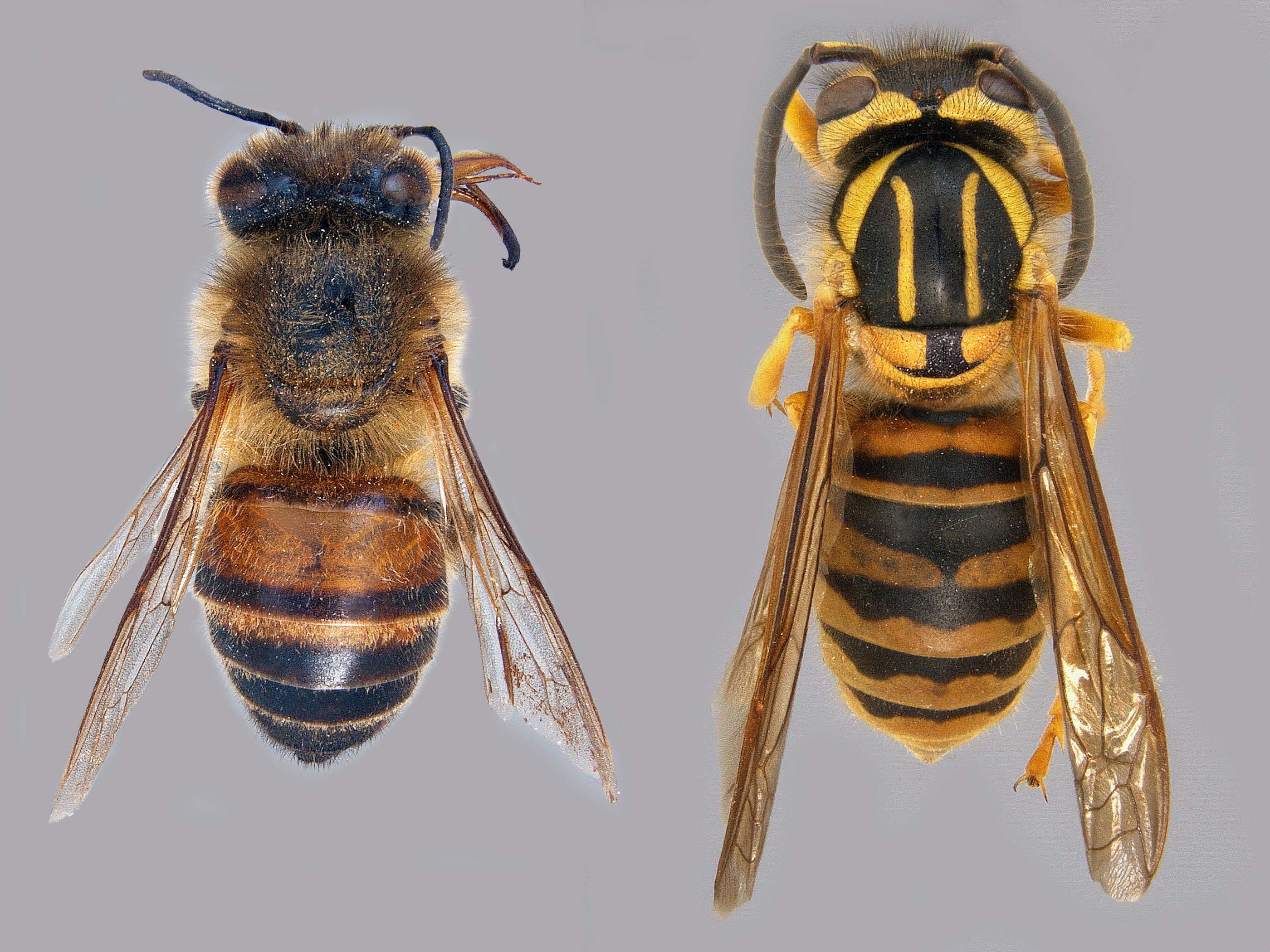

Image Source extension.msstate.edu
Welcome to the intriguing world of buzzing insects, where the survival of the fittest is an everyday struggle. In this fascinating blog post, we delve into the intense rivalry between two pint-sized adversaries: the honey bee and the yellow jacket. These tiny creatures may seem unassuming, but they are engaged in an epic battle for dominance. Join us as we uncover their unique characteristics, habits, and the hazards they present. Brace yourself for a journey into the captivating world of these buzzing combatants.
The Honey Bee: Nature’s Diligent Worker
When you think of honey bees, the sight of vibrant yellow and black stripes probably comes to mind. But there’s more to these busy little creatures than meets the eye. Honey bees belong to the Apidae family, and among the thousands of species, the Western honey bee (Apis mellifera) takes center stage. With their fuzzy bodies and prominent stingers, they are true marvels of nature.
One of the most remarkable aspects of honey bees is their social structure. They live in highly organized colonies, with each member having a specific role to play. The queen bee reigns supreme, laying up to 2,000 eggs per day. Drones, the male bees, have a singular purpose – to mate with the queen. However, the unsung heroes of the colony are the female worker bees. These tireless workers undertake numerous tasks, from foraging for nectar and pollen to building intricate honeycombs.
Although honey bees are generally docile creatures, they will not hesitate to defend their territory when threatened. Their stingers, designed primarily as a defense mechanism, allow them to inject venom into their adversaries. However, once a honey bee stings a person or animal, it loses its stinger and dies shortly afterward. This act of self-sacrifice serves as a testament to their loyalty and dedication to the colony’s survival.
The Yellow Jacket: A Ferocious and Opportunistic Predator
While honey bees are renowned for their sweet nectar and honey-production prowess, the yellow jacket takes a different approach to life. Classified under the Vespidae family, these aggressive insects epitomize the concept of survival of the fittest. Yellow jackets are often mistaken for bees due to their similar appearance, but they possess some distinct characteristics that set them apart.
The most notable feature of yellow jackets is their smooth and shiny appearance. Unlike honey bees, they lack the signature fuzziness and have elongated bodies, marked with distinctive black and yellow stripes. Moreover, yellow jackets are highly social, living in colonies consisting of thousands of individuals. They construct intricate nests, often hidden underground or in protected areas, providing them with shelter and security.
One of the significant differences between yellow jackets and honey bees is their diet. While honey bees survive on nectar and pollen, yellow jackets are ruthless predators. They feed on a wide range of insects, including other bees and wasps. These opportunistic hunters are also known to scavenge for human food, making them unwelcome guests during picnics and outdoor events. Their aggressive nature combined with their ability to sting repeatedly makes them a force to be reckoned with.
The Sting in the Tale: A Comparison of Dangers
Both honey bees and yellow jackets are equipped with stingers and venom, making them potential threats to humans and animals. However, assessing the dangers posed by these buzzing combatants requires a closer examination of their behaviors and the severity of their stings.
Honey Bee Stings: A Sacrificial Act
When a honey bee stings, it embeds its barbed stinger into the victim’s flesh. As the bee attempts to withdraw, the stinger’s barbs prevent it from doing so, effectively tearing its body away. This self-sacrificial act results in the death of the honey bee, as it loses part of its internal organs along with the stinger. Although honey bee stings can cause pain, swelling, and itching, the overall impact on humans is generally mild. However, individuals with allergies to bee venom may experience severe reactions that require immediate medical attention.
Yellow Jacket Stings: A Calculated Aggression
Unlike honey bees, yellow jackets possess smooth stingers, allowing them to sting repeatedly. This ability, coupled with their aggressive nature, makes yellow jackets more likely to engage in repeated attacks on their victims. Their venom contains chemical compounds that can trigger moderate to severe allergic reactions, particularly in individuals sensitive to the toxins. In rare cases, multiple yellow jacket stings can lead to life-threatening conditions, emphasizing the importance of exercising caution around these insects.
In conclusion, the battle between honey bees and yellow jackets is a captivating spectacle in the insect kingdom. Each species possesses unique traits, playing a distinct role within their colonies. While honey bees rely on teamwork, dedication, and self-sacrifice, yellow jackets employ aggression and opportunism to ensure their survival. Understanding and respecting these buzzing adversaries can help us coexist harmoniously with nature’s fascinating creations.